Archive
why Rody Duterte is wrong for the country – he inspires us be our worst #2016PHVote
this picture of a Duterte supporter displaying this poster during the last presidential debate in Luzon is prime example of why Rody Duterte is not right, is bad for the country and our people – Duterte inspires us to be our worst. with Duterte, we think being stupid is the right thing to do and to be.
this Duterte supporter thinks telling those who will not vote for their candidate that they will be killed is okay, even smart and for sure something to be proud of. the supporter forgets or ignored that killing is a crime and not something decent people wish for others.
i am thinking this supporter thinks this is okay, as he will probably say it’s just a joke or these are just words. but that on itself is also wrong. it’s not a joke when you kill someone or when you are killed, the same way as it is not a joke to say you would have wanted to be the first to rape a dead victim who has been gang raped.
we take decency so lightly now, even our values and principles. Duterte has given us the example to do that. and by Duterte’s example we can be harming and hurting others now and just give it an excuse later or just apologize after the harm has been done.
this is now who we are as a people. we do not teach these things these values and thinking to our children, in fact we teach our children not to be like these. why then do we tolerate and follow the example of Rody Duterte?
Daang Matuwid – the Mar Roxas presidential bid killer #2016PHVote
This is a journey that started sometime in October 2015. that was a few weeks when Mar Roxas officially announced his candidacy with a big gathering at the historic Club Pilipino in Greenhills, San Juan City. The LP faithful were all there and President Noynoy Aquino was the main speaker who announced to the country that he was endorsing the candidacy of Mar Roxas for the presidency.
Daang Matuwid was the over-all theme of that launch. Aquino had declared that Mar Roxas was the best among the presidentiables who can continue Daang Matuwid. It worked, Mar Roxas ratings in the polls jumped from an anemic single digit to double digits. Around September 2015, Roxas’ ratings were at a number that made him competitive.
At around October, I sat down and did an analysis of what was happening. There were no data available yet at that time but based on my analysis, I thought Daang Matuwid would eventually hurt Roxas.
At around that time, I started to tweet about my thoughts about the Mar Roxas campaign. I did not exprssly say Daang Matuwid was an error, but I was tweeting about problems on the Mar Roxas campaign. I kept the Daang Matuwid as the problem to myself because I thought the Roxas campaign will eventually get it and change their campaign strategy. I thought it was best to keep it a secret, not revealed publicly as I did not want to give clues to Mar Roxas’ competitors,
The qualitative data are those available in the media – survey results from Pulse Asia, SWS and the Laylo Report.
Daang Matuwid is Mar Roxas’ brand positioning, it is what he wants voters to remember him by and in effect the basis for their support for his candidacy. He used Daang Matuwid in most of his TV ads either as a tagline or in the copy. Based on news reports, he also mentioned this during his campaign sorties.
The power of an advertising positioning which in this case is Daang Matuwid is best measured by results. If this was the advertising positioning of a consumer goods brand, the best measure is market share first and box sales next. When market share and box sales go up or the goals are achieved, the advertising positioning is judged as successful. If it gives the opposite result, then it is a failure.
In this case the presidential surveys results is the best measure of how effective Mar Roxas’ Daang Matuwid brand positioning. The results are bad – after 8 months all that it got Roxas is flat ratings and flat ranking at 4th out of a field of 5 candidates.
There is no better quantitative data that proves Daang Matuwid killed the Mar Roxas presidential bid than the poll results.
we did an analysis of Mar Roxas’ Daang Matuwid brand positioning and from that analysis, though still not benefitting from data, the conclusion was it is bound to hurt Mar Roxas in this election.
this was posted here : http://wp.me/pnw03-1Z5 why Mar Roxas’ “Daang Matuwid” ad campaign is failing
Ads that have elements that are polarizing tend to fail / not do well in the market place. The ideal ad among other things is that it should only contain positive elements in it, and no negative elements.
Looking at the US elections, even Hillary Clinton and Bernie Sanders who belong to the same political party as Barack Obama are promising change. This is most obvious with Clinton who is a strong ally of Obama. She has never said she will just continue what Obama has done. In fact Clinton is promising many changes, some of them very major changes.
That is not true with Mar Roxas. Roxas very clearly states, he will just continue Daang Matuwid.
we have heard Mar Roxas very defensive on Daang Matuwid and the achievements of the Aquino administration. this did not help Roxas as it took away from him telling the people what his plans are for the country. also, Daang Matuwid is the work and program of Aquino, not his and yet all its failings is being attributed to him too.
in effect, the more Roxas talked of Daang Matuwid either in its defense or to make a promise of continuing it, it is hurting the presidential bid of Roxas.
After 8 months of Daang Matuwid as Roxas’ brand positioning and spending more than P1 Billion pesos on it and getting only 4th in the ranking at the most, it should have been obvious that changes were needed for the Mar Roxas campaign.
Being stuck at 4th for 8 months, they should have changed their campaign objective to getting switchers from the supporters of the other candidates. And if they thought of that as a campaign objective, then they would have looked at what needs to be changed in their campaign strategy, Getting switchers mean attracting them to change sides. And in attracting them, they would have looked at what are the barriers as to why they have not switched to Roxas and/or what they can say to attract them. In political campaigns removing the negatives is as important as offering the positives. The Roxas campaign did not seem to do this.
This data was released sometime in February 2016. That was the first quantitative data that I saw which confirmed my analysis and conclusion on Daang Matuwid. The core of the points I was raising was that Daang Matuwid was hurting the Mar Roxas campaign. That was purely based on analysis using leanings and principles in marketing, advertising and brand positioning. This quantitative data confirmed my analysis.
And that was what led me to publish in my blog my thoughts on the Mar Roxas campaign, I finally had 2 quantitative data – this one and the trend line that was obvious in the Pulse Asia poll results.
The data speaks of what voters think of Mar Roxas, it tells us specifically why they are not voting Mar Roxas. They were not voting Mar Roxas because he was “masungit”, “elitista” or the allegations of his failures in his previous cabinet member jobs, it was about questions on his leadership qualities, his not having his own views and vision and his relationship with Aquino. They saw Roxas as a puppet of Aquino. And I suppose because of that they saw him unfit to be president.
We think this is the result of Roxas continuously talking about Daang Matuwid, something that everyone knows to be Aquino’s. Aquino per se or his close relationship was not hurting him but it was that he failed to show his own brand of leadership. Contrast that to his opponents, most notable Rody Duterte whose platform was essentially based on bravado and strong leadership. We are sure that if you ask people to compare Roxas to Duterte, they will say Roxas is a wimp compared to Duterte’s super hero status. On the basis of character, Roxas was inferior compared to Duterte.
The second biggest reason they are not voting Roxas is “might just be like Aquino, no change” at 16% directly supports the point I have made – that Daang Matuwid is a platform for the status quo, no change and no improvement.
–more to follow–
Rody Duterte on rape : “Dapat ang Mayor muna ang nauna (sa rape)”
English title : Rody Duterte on rape: “It should be that the Mayor be first (in raping her)”
this is the transcript of the video:
English : “They raped all the women. During the first assault, they retreated, they left behind who they used as cover. One of them is this lay minister who is Australian. I thought this was already a big problem. The Australian Embassy kept on calling.
When they went out, she was covered. I looked at her face. Mother fucker she looked very fair (?). She looked like an actress from America who is beautiful. Mother fucker what a waste.
What went into my mind was that they raped her, all of them gang raped her there. I got angry because she was raped. Yes, that is also one reason, but she was very beautiful, it should be that the Mayor would have been first with her.”
this is the video :
the attack ad memes that the Mar Roxas campaign needs – since yesterday
sometime mid March, we posted a chart over twitter for the Mar Roxas campaign. at that point there were many data points that were showing the Roxas campaign was not going anywhere. Roxas’ ratings in the polls were not going up.
in many of Mar Roxas supporters’ minds was the question – can Mar Roxas till win the election? and other questions like – what can Roxas still do to win? is it too late for him?
those questions were being asked of me over at twitter since i had taken the view that the Mar Roxas campaign was failing. having a weak campaign was a view i took since November 2o15 when i started tweeting about it. that POV was based just on an analysis of the Mar Roxas ad campaign and the resulting brand positioning that Roxas has taken. it was anchored the ad campaign and brand poisoning of “Daang Matuwid” which is the main weakness.
at that time in November there were still a few quantitative data points to support my analysis and point of view. but that changed by February 2016 when there were already an avalanche of data points that showed the Roxas campaign was failing – poll results showed he was stuck at 4th place in a field of 5 candidates and his ratings were not moving at all, it was flat within the 18% to 20% range.
this will deal with number 3 on the above – “air attack ads vs Binay, Poe and Duterte”. they are Mar Roxas’ opponents who occupy the first 3 positions ahead of his 4th ranking.
at this point, Mar Roxas’ campaign objective need to be : add supporters by gaining from and converting supporters of his opponents to his side.
he is 4th and at best has 20% in the polls. those will not win the election for him. he will obviously need to go up to 1st with at least a 35% rating. that means he needs to take 15% points from his competitors. he needs to convert that many supporters of his opponents to his side,
one of the most effective ways to do that is to air attack ads against his opponents. attack ads are ads that question the credibility, put in doubt the abilities and correct the wrongs said or done by Roxas’ opponents. the target audience are the supporters of his opponents and the goal is to convince them that they are supporting the wrong candidate and instead shift their support for Roxas.
today, we saw over at twitter memes on Grace Poe based on her performance during the last second presidential debate. these are “fact check” memes – these memes are correcting the wrong things that Poe said during the debate. these to us is a form of attack ads.
there were many more “fact check” violations committed by Grace Poe during the debate. and even much more committed by the other candidates, Rody Duterte and Jejomar Binay.
over at Twitter, i suggested to the mar Roxas campaign and Mar Roxas supporters to do more fact check memes on Poe and specially the other opponents of Roxas.
memes are cheap to make but we think if done well and in good numbers, it can be effective specially if traditional media picks them up.
attack ads are what Mar Roxas needs. they are not a WAWAM!
Daang Matuwid failure – after 7 months, Roxas reaches only 4th and flat in the polls
Mar Roxas’ presidential campaign is unique – it is the only campaign that has single-mindedly stayed on one platform and advertising campaign since it launched in end July, 2015 with the formal endorsement of President Noynoy Aquino at Club Filipino. Roxas has stayed on “Daang Matuwid” since  that formal endorsement. In the words of Aquino, Mar Roxas will “continue Daang Matuwid”.
that formal endorsement. In the words of Aquino, Mar Roxas will “continue Daang Matuwid”.
With that announcement, Roxas got a huge bump in the polls, surging from a single digit rating to a double digit rating. That was in September 2015 where his rating at Pulse Asia stood at 18% making him a legitimate contender among the presidentiables. The surge placed Roxas at 3rd and very close to Jejomar Binay who was at 2nd, That was the first time that Roxas placed strongly in the polls.
But that surge in September 2015 was the last good news Roxas has gotten in the polls. For seven (7) months since September 2015 that Roxas has stayed on “Daang Matuwid” , Roxas has not gotten any good news in the polls.
After seven (7) months, Roxas is still 4th out of 5 candidates and his ratings has remained flat, just moving within the range of 17% to 20%, close to being within the margin of error. Being within the margin of error means the differences in his ratings are not significant, his numbers have not really changed.
This means “Daang Matuwid” is associated with failure, the most that it has given Roxas in the last seven (7) months of being single-minded on it is 4th place that is not moving at all. fourth place in an election will not win it.
In marketing and advertising an ad campaign or a brand positioning that is not delivering the results, like a rise in market share or an uptick in volume sales, is immediately dropped and changed into something else.
This action of dropping and changing ad campaigns and brand positioning is even more dire in a political campaign. A political campaign is short, lasting just months and has a definite deadline – election day. Not getting it right by election time means losing the election.
Mar Roxas’ “Daang Matuwid” for sure is a WAWAM!
Read also :
-
why Mar Roxas’ “Daang Matuwid” ad campaign is failing http://wp.me/pnw03-1Z5
-
Mar Roxas’ “Daang Matuwid” ad campaign is failing him – the numbers show it http://wp.me/pnw03-1YE
1,400 Catholic Schools slams Bongbong Marcos “Supports Call Against Marcosian Snares and Imeldific Lies”
1,400 Catholic schools back call vs ‘Marcos snares, Imeldific lies’
NEVER AGAIN. Leaders of Catholic schools speak out against ‘Marcosian Snares and Imeldific Lies’ after the Ateneo community released a statement on the issue. EPA file photo
MANILA, Philippines – More than 1,400 Catholic schools represented by their group, the Catholic Educational Association of the Philippines (CEAP), joined the call against the supposed attempt of Ferdinand “Bongbong” Marcos Jr “to canonize” his father’s regime.
“The Trustees of the Catholic Educational Association of the Philippines, representing the 1,425 CEAP member-schools, colleges, and universities, support the faculty of the Ateneo de Manila University in their call against the attempt of
Ferdinand Marcos Jr to canonize the harrowing horrors of martial rule,” CEAP said in a statement late Monday evening, March 7.
The statement is titled, “CEAP Supports Call Against Marcosian Snares and Imeldific Lies.”
CEAP issued this statement after presidents of the Philippines’ 5 Ateneo universities, run by the Jesuit religious order, lent their weight to a call against the “revision of history” by Marcos Jr.
In the statement released on March 7, CEAP said it supports the Ateneo de Manila University’s faculty in condemning “the attempt of Ferdinand Marcos Jr to canonize the harrowing truths of martial rule.”
“With the same fervor, we cry our hearts out, ‘Never Again!’” CEAP added.
Like the Ateneo professors, CEAP said they remained committed to teach the truth, calling upon the Department of Education and Commission on Higher Education to have “the same level of introspection.”
However, they also admit possible shortcomings: “It seems we have been remiss in instilling in the youth’s consciousness about the regime’s brutal savagery. Instead they have been drowned out by the Marcosian snares and the Imeldific lies.”
‘Willful distortion of history’
The original statement from the Ateneo faculty had nearly 530 signatories from the Ateneo community as of March 7.
Along with faculty from the Grade School, High School, and Loyola Schools, Ateneo Presidents have also added their signatures.
Of these, Ateneo de Zamboanga University President Fr Karel San Juan, SJ and Ateneo de Davao University President Fr Joel Tabora, SJ are members of the CEAP board of trustees. Tabora is the CEAP vice president while San Juan is the CEAP trustee for the Zamboanga Peninsula.
The Ateneo faculty railed against “the shameless refusal to acknowledge the crimes of the Martial Law regime” and “the revision of history, disturbing vision of the future, and shallow call for ‘unity’ being presented by Marcos Jr and like-minded candidates in the 2016 elections.”
They issued the statement in response to Marcos saying historians, not politicians, should judge his father’s rule.
Catholic schools vs Marcos regime
Students and faculty of Catholic schools were some of the major opponents of the Marcos regime with many members joining the protest movements long before EDSA I in 1986.
Ateneo graduates like former Antique Evelio Javier, poet and activist Emmanuel Lacaba, and youth activist Edgar Jopson were outspoken critics of the Marcos regime. All 3 died under Marcos’ rule. (READ: Edjop, Imelda Marcos, and the fear of forgetting)
Other prominent Catholic educators in the Philippines like Sr Mary John Mananzan, former president of St Scholastica’s College Manila, also stood up against martial law and participated in EDSA I.
Senator Marcos has staunchly defended his father’s regime, refusing to apologize for whatever may have happened during that period. (READ: ‘Bongbong Marcos knows what to apologize for’)
According to Amnesty International, about 34,000 were tortured. Nearly 3,240 were killed. Others lived to retell their ordeal so that the new generation would learn from this dark period of Philippine history. (WATCH: ‘Lucky day’: Surviving torture during martial law)
His popularity has been on the upswing and continues to rise despite his stand on Martial Law. (READ: Marcos years marked ‘golden age’ of PH economy? Look at the data)
In the latest February 15 to 20, 2016 Pulse Asia survey, Senator Marcos got 26% of the vote, a 3-point increase from January 2016. – Rappler.com
5 Ateneo university presidents join condemning Bongbong Marcos for historical revision
412 Ateneo professors first release the condemnation letter recently. it has now ballooned to 512 signing the letter which includes 5 presidents of Ateneo universities, all Jesuits.
praise Ateneo and praise the Jesuits.
MANILA, Philippines – Leaders of the Philippines’ 5 Ateneo universities, run by the biggest religious order in the Catholic Church, joined the call against the “revision of history” by Ferdinand “Bongbong” Marcos Jr.
Like nearly 530 others as of Monday, March 7, the 5 Ateneo presidents signed a statement titled, “We are not blind to the darkness and oppression of the Marcos years!”
Initially released on March 2, it is a statement “of concerned members of the Ateneo de Manila University on the martial law regime and Bongbong Marcos’ revision of history.”
The statement was initially signed by at least 412 members of the Ateneo community, a number that rose by more than a hundred in less than a week.
The following Jesuit leaders lent their weight to the statement:
- Father Jose Ramon Villarin, SJ, president, Ateneo de Manila University
- Father Primitivo Viray, SJ, president, Ateneo de Naga University
- Father Joel Tabora, SJ, president, Ateneo de Davao University
- Father Roberto Yap, SJ, president, Xavier University/Ateneo de Cagayan
- Father Karel San Juan, SJ, president, Ateneo de Zamboanga University
why Mar Roxas’ “Daang Matuwid” ad campaign is failing
Part 3.
this is a lethal combination for any campaign or brand – when your own ad campaign is doing badly while at the same time your competition’s ad campaigns are doing very well. you have nowhere to go for strength.
the Mar Roxas ad campaign fails in its advertising strategy. no amount of creative advertising or media spending can make an ad campaign work for you when the strategy is all wrong.
brand positioning is the most important and most powerful component of the advertising strategy. get the brand positioning wrong and everything else is wrong and weak.
the Mar Roxas campaign is so entrenched and totally defined by “Daang Matuwid” that any negative, any comment or any problem with it by extension is put on Mar Roxas. never mind that Roxas has no direct hand on them. voters are not seeing that. the take away of voters is that with Daang Matuwid as failing or having problems, Mar Roxas is failing and having problems.
elections are about the future, the things that will happen for us in the future. that is the reason why elections are about promises that the candidates are making now and will do in the future. Daang Matuwid is about the current and the past. a candidate promising the current and the past will not be going anywhere in an election that is about the future.
with Roxas placing 4th out of 5 presidentiables, his marketing and campaign objective is clear and obvious – he needs to convert supporters of his competitors into his camp. his goal is to look for switchers from his competitors, he needs to convert them to his camp.
“Daang Matuwid” does not do that. in fact the reason supporters of his competitors are supporting others is because they are promising something other than “Daang Matuwid”. promising “Daang Matuwid” is not giving them reason to switch. all that it will do is sustain his current power base which based on the surveys is a small minority.
dropping “Daang Matuwid” is a very major and serious change that the Mar Roxas campaign needs to do. it is necessary. keeping it in the campaign as a brand positioning will not move up Roxas’ standing in the surveys and not move him to win in the election.
there should be some consumer research that the Mar Roxas campaign can do to confirm my views on Daang Matuwid. regardless of the consumer research , the numbers that we have now supports my view – Roxas’ ratings are flat and he ranks 4th out of 5 candidates.
Mar Roxas’ “Daang Matuwid” ad campaign is a WAWAM!
ads of Mar Roxas’ competitors that worked for them, hurt Roxas
Mar Roxas’ “Daang Matuwid” ad campaign is failing him – the numbers show it
“Daang Matuwid” is hurting Mar Roxas, to win #2016PHVote, he needs to junk it
the presidentiables on the Economy and Jobs
PDI is running an interesting series of articles on the presidentiables. we ae providing a link here and excerpts.
source : Agenda of the next president: Economy and jobs
Agenda of the next president: Economy and jobs
Starting Feb. 9, 2016, the Inquirer is coming out with a 10-part series on pressing national concerns that should be high on the agenda of the five contenders in the May 9 presidential election. The series should help Filipinos choose wisely the country’s next leader.
In line with the Inquirer’s “ThINQ.Vote.” advocacy, we have asked the presidential candidates to outline their concrete plans of action in dealing with 10 decades-long issues on poverty, economy and jobs, food security, peace and order, corruption, health care, foreign policy, traffic, climate change and Internet connectivity.
Under the Aquino administration, the economy has grown by an average of 6.2 percent–the fastest since the late ’70s. And thanks to reforms in the bureaucracy, business has been bullish and foreign direct investment has been rising 53.1 percent from 2012 to 2014. But not everything is rosy. Creating jobs remains a challenge, more so as global oil prices plunge. If the downturn continues, some 1.5 million temporary workers in the Middle East could lose their jobs.
INQUIRER.net is publishing verbatim the candidates’ action plans to strengthen the economy and create jobs for Filipinos. For the summary of the 10 pressing issues, go to our special Election 2016 website.
Jejomar Binay
A Binay administration will pursue the amendment of the economic provisions of the Constitution. We aim to ease the foreign ownership restrictions on key sectors as this will open up the economy further–a major factor in attracting more foreign direct investments (FDIs). More FDIs mean more jobs and livelihood for Filipinos.
Under a Binay presidency, we will also strengthen substantially the sectors of agriculture, manufacturing, tourism, business
process outsourcing, and exporting–which are the five biggest job generators.
Agriculture
Reforms will be undertaken to foster a competitive and sustainable agriculture and fisheries sector to increase agricultural productivity. A Binay presidency will create agricultural economic zones in key agricultural provinces and promote agricultural value-added processes to increase job creation, reduce post-harvest process and enhance output value.
We will train farmers to shift from subsistence farming to agribusiness; amend CARP (Comprehensive Agrarian Reform Program) provisions to allow farmers to lease their land to agri-entrepreneurs and investors; and push crop diversification, wherein high-value crops–much more profitable than rice and corn–are planted.
A Binay administration will also provide subsidies in irrigation, fertilizer and seeds to help farmers defray some costs. We will also help farmers get connected to markets such as restaurant chains, supermarkets and food processing companies, and enable them to access credit. We will strengthen crop insurance services and credit guarantee to minimize farm-related credit risk. We will also seek to lower transaction cost to reduce lending rates.
We will improve water resource management and planning through research, and train local farmers as an operational intervention to increase manpower and double the area of irrigated lands.
Many of our farmers are now aging and young Filipinos shun farming because it is perceived to be difficult and its returns are low. It is vital that the government help reverse this thinking in order to ensure the sustainability of our agricultural sector and our food security.
Business Process Outsourcing
The business process outsourcing industry has greatly contributed to the economy and provided an unprecedented number of jobs to the Filipino people. The “IT-BPO Roadmap 2011-2016: Driving Global Leadership” formulated by the Business Processing Association of the Philippines stated that if the forecast will come true, the IT-BPO companies could employ up to 1.3 million Filipinos and generate 10 percent of gross domestic product (GDP).
As the industry relies heavily on good Internet connection, the Binay administration will create a Department of Information and Communications Technology to help improve the country’s IT infrastructure and help grow the BPO sector further.
Tourism
The Philippines also needs to promote tourism as an economic driver. If tourist arrivals increase to 15 million by 2020, it will result in employing almost 10% of our population in tourism-related work and for the tourism sector to contribute 10% of our GDP. A Binay administration will develop, craft and implement a National Tourism Strategy that will link infrastructure development, support services and establishments, marketing and promotions plan, and development plans for tourism areas.
Manufacturing and export
There is a need for the manufacturing and export sector to become more competitive since the sector provides higher wages and absorbs more Filipino workers as compared to other sectors. A Binay presidency will focus on policies and reforms that will allow expansion of this sector by improving infrastructure and technology/logistics to lower costs of production, establish finance support programs for small- and medium-scale enterprises, streamline the bureaucratic process such as establishing one-stop shop, ensure affordable energy/power cost, continue to produce strong and highly-skilled workforce and encourage domestic linkages for raw materials.
To bolster these areas of development, it is essential that: (1) infrastructure development is made a priority; (2) increase fiscal space to benefit the businessmen and free the middle class; (3) streamline the bureaucracy; (4) adopt an energy policy conducive to growth; (5) leave business to the businessmen; (6) empower the local government units; (7) adopt policies that take into consideration issues on climate changes; and (8) a cooperative foreign policy.
Rody Duterte
Initiate measures to curb the present practice of contractualization.
Set higher coverage targets for the Social Security Systems, Philippine Health Insurance Corp. and Pag-ibig Fund.
Revitalize basic industries like steel to create raw materials for downstream industries that are job generating.
Prioritize agriculture and the processing of agricultural products to provide job and livelihood opportunities in the countryside, as
well as increase farm incomes, farmers and fishermen being among the poorest of our population.
Create the peaceful environment in the countryside to encourage investment beyond incentives.
Lower electricity costs by encouraging smart grids and small scale power generation to include household solar power generation.
By prioritizing agricultural development, coupled with transportation infrastructure to link farm production with their markets, we can ensure accessibility and affordability of food, which is the biggest part of average household expenditures.
Infrastructure gaps, whether in the countryside or in key urban centers, shall be prioritized and substantially filled, or at least initiated, during my term.
Grace Poe
Poverty Alleviation: Poverty Alleviation is our flagship economic strategy.
Pursue a context sensitive poverty alleviation strategy anchored on enterprise development, development of agriculture/agribusiness, manufacturing and tourism, human development, fair competition policy, political empowerment and participatory development, social security, direct assistance to the poor and asset building and reform.
Critical Infrastructure: Ensure that our infrastructure program is
designed to be participative, collaborative and innovative.
Undertake a whole-of-government approach and tap the participation of private sector and civil society in making an assessment and evaluation of our existing infrastructure situation for a sounder national infrastructure plan
Review existing contracts, particularly in transport infrastructure, to terminate onerous agreements and contracts loaded with huge penalty payments and sovereign guarantees that short-change both the general public and taxpayers
Maximize three viable options in the development of key infrastructure projects: National Government Financing, Public-Private Partnerships and Office Development Assistance and ensure the wise and strategic use of these mechanisms.
Regional Competitiveness: The building blocks of national competitiveness are competitive regions. Our program to increase regional competitiveness is anchored on three pillars: 1) fostering a healthy local economy, 2) good local governance and 3) appropriate infrastructure.
Healthy Local Economy. Coupled with efforts to development enterprises, micro, small and medium enterprises (MSMEs) will be empowered to have full access to and become competitive in both regional and international markets by: (1) identifying markets and opportunities where their products and services are in demand, (2) upscaling the quality and compliance of their products to international standards, and (2) finding ways to move their goods and services to various markets at the least possible cost.
Good Local Governance. Establish an apex MSME agency to ensure the effective implementation of the integrated services system; Harmonize the efforts of both national agencies and local government units to make the support system—from access to finance to business mentoring—easily accessible to MSMEs.
Appropriate Infrastructure. National government agencies such as the Department of Transportation and Communications and Department of Public Works and Highways will work with regional and local government counterparts to ensure that infrastructure projects undergo correct procurement process and projects are awarded to contractors with track records in long-term maintenance.
Tax Environment: Design and implement a tax system that is simple, stable and certain.
Tax rate and bracketing reforms. Introduce two sets of reforms in our tax system:
Adjust income tax brackets taking into account inflation so that the cut-off for every tax bracket would be increased based on the amount of current prices to protect the purchasing power of the individual tax payer
Lower personal and corporate tax rates in a well-phased manner (annual) to be at par with our Asean neighbors
Tax administration. Improve tax collection rates of both the Bureau of Internal Revenue and Bureau of Customs from a moderate 1% to an aggressive 2% of the GDP by leveraging on full automation of tax filing and customs procedures through ICT to ensure maximum tax compliance.
Tax simplification. Re-engineer the tax filing process by minimizing the number of steps, requirements, forms and fees imposed by tax collection agencies. It takes around 36 payments and 193 hours to fully comply with tax obligations.
Investment Climate: Create an attractive, healthy, low-cost and predictable investment climate.
Increase level of cohesion between government, business groups and stakeholders in crafting and developing industry roadmaps to attract more investments in the country.
Investment promotions agencies such as the Bureau of International Trade Relations, Export Marketing Bureau and Foreign Trade Services Corps shall work with the Board of Investment to identify bottlenecks that cause foreign direct investment inflow fluctuation and align investment priority areas with industry roadmaps for a solid and time-bound action agenda.
Take careful but important steps to review and amend the economic provisions of the Constitution, particularly in industries that need more foreign investments—the primary and service sectors, mining, oil and gas industries while ensuring that support systems and adequate safety nets are in place to increase absorptive capacities of our local industries.
Mar Roxas
For the past five years, we’ve managed to sustain our growth numbers but efforts to do so were simultaneous with our anticorruption measures, which may have limited government spending at first. Nonetheless, we have managed to yield positive results and gained the confidence of the world from being the “sick man of Asia” to “Asia’s bright spot” by upholding the bedrock principles of Daang Matuwid: Transparency, rules-based
governance and a strong anticorruption foundation. To make for an environment that is even more conducive for social and economic development, we must ensure stability and predictability of policy outcomes.
Therefore, it follows that if we want to achieve more, we must continue on our path. The first five years of Daang Matuwid have allowed us to address the leakages in the system. Now that the pipelines have been sealed, the next years will be devoted to investing in our people by providing quality services such as education, trainings in diversified skills, infrastructure, and the creation of more and higher value jobs.
For example, we see agriculture as both an immense challenge and a lucrative opportunity that holds the key to our country’s development. We can revitalize our agricultural sector by consolidating the production of agricultural products in order to achieve efficiencies and economies of scale. In the process, we are insulating our farmers from vulnerabilities caused by natural calamities such as droughts and typhoons by treating them as employees with a monthly salary. Not only are we providing the farmers a safety net, we are also reducing their operational costs, making agriculture an efficient, profitable, and competitive venture for investors and job-seekers.
We also intend to see resurgence in the manufacturing industry by inducing competition in the power sector, which in turn will lower power costs and attract investments in industry. Jobs generated in the manufacturing sector can provide a stable source of income for Filipinos. By using our balance sheet to make capital more accessible to the people, we can also spur growth in local economies and unleash the energies of our micro, small and medium entrepreneurs.
All these deliberate efforts will be undertaken to ensure that the workforce can move higher in the value chain and that every Filipino family is given a fair chance to be free from hunger, free from fear, and free to dream.
Miriam Defensor-Santiago
I commit that the Philippine economy will grow faster than ever before, that it will be truly inclusive by making sure that real incomes of workers will increase over time. We will achieve the goal of higher and sustained economic growth by investing heavily in public infrastructure. Our roads, bridges, urban transit systems, airports and seaports are crumbling. We need to build them up at par with, if not better than, our Asean neighbors. We need to prepare our people for a more modern, more competitive global
economy. We need to educate them, take care of their health, and feed them so they will become productive members of a growing work force. Only by investing in people can we truly make growth inclusive. Only if the young are educated and healthy can they benefit from growing economic prosperity. My administration will:
Modernize agriculture and make it more productive by:
Investing in productivity enhancing infrastructure to boost agriculture;
Investing in irrigation and water impounding facilities in order to allow more planting cycles and to minimize the impact of El Niño and La Niña;
Financing programs that would expand the use of new seed varieties and modern technology in order to increase farm yield; and
Investing in research and technology;
Reinvigorate manufacturing and reenergize exports by:
Implementing a more affordable and stable power supply;
Reducing cost of doing business in the Philippines;
Improving peace and order in farms and factories;
Creating national industries that can be marketed internationally, such as machinery and equipment for agriculture; and
Making the peso competitive relative to currencies of our competitors;
Improve the investment climate by:
Streamlining and harmonizing business process and licensing procedures;
Codifying and updating laws and issuances affecting customs and tariffs;
Enhancing trade facilitation measures;
Cutting red tape at the local government level;
Drastically reducing regulations at the Bureau of Customs and the regulatory bodies; and
Amending the restrictive provisions in the Philippine Constitution which have discouraged the entry of foreign investors into the country;
Reform the tax system by:
Adopting comprehensive income taxation and reducing maximum personal income tax rate from 32 percent to 25 percent;
Reducing the corporate income tax (CIT) rate from 30 percent to 25 percent;
Rationalizing fiscal incentives to partly offset the revenue loss from lowering the CIT rate;
Imposing a national real property tax (RPT) piggybacked on local RPT;
Abolishing the estate tax;
Abolishing tax on dividends; and
Gradually raising the value-added tax rate from 12 to 15 percent by 2019; and
Reduce unemployment and underemployement by:
Ending contractualization, which is an economic deprivation of life and security of person;
Creating national industries to increase job opportunities for skilled workers in the Philippines to prevent migration of workers; and
Creating more jobs per sector, especially in the science and technology, and infrastructure industry.


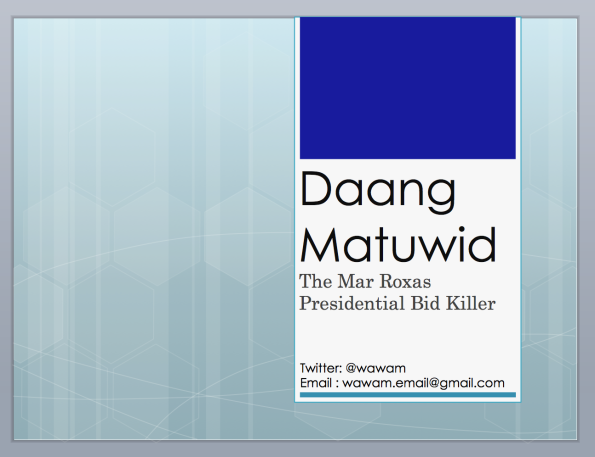





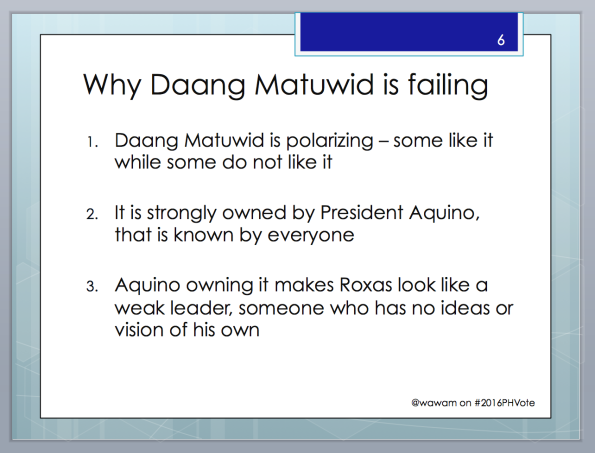




















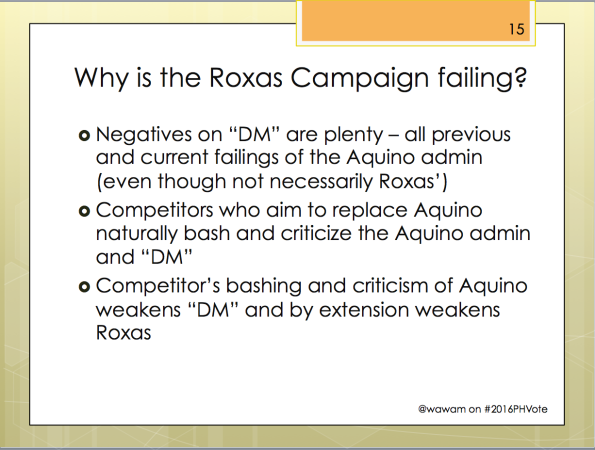






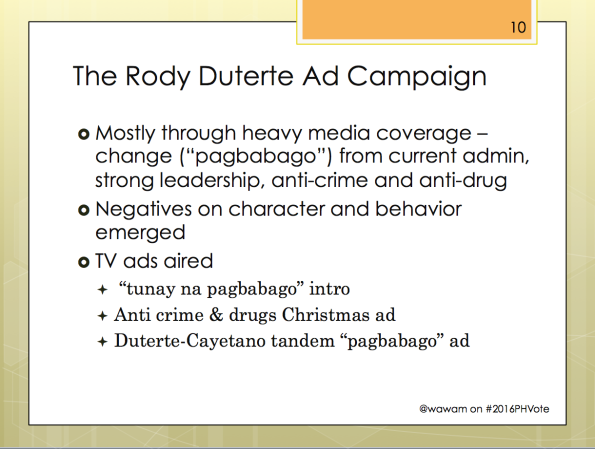



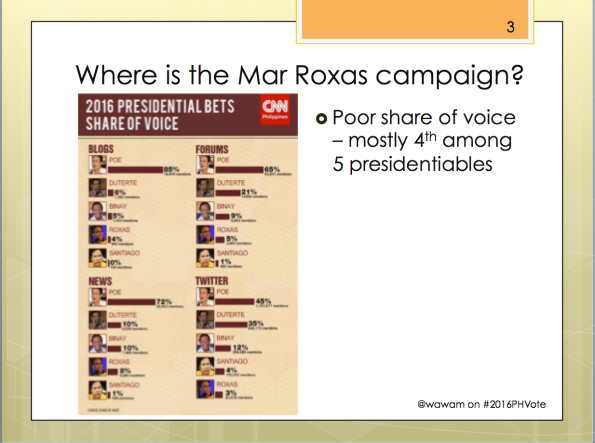





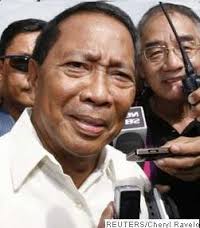



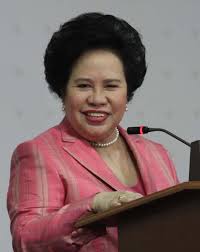

Readers Speak Up